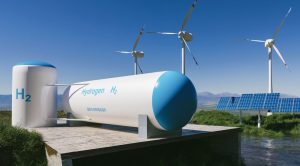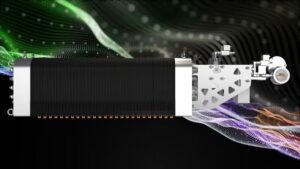By David Sear
The new 20 MW PEM electrolyser, equipped with Cummins technology, is the largest operating unit of its kind in the world and will help meet the growing demand for low-carbon hydrogen in North America. Bécancour’s proximity to the main industrial markets in Canada and the United States will help ensure their supply of low-carbon hydrogen for industrial use and mobility. The commissioning of this electrolysis unit increases by 50% the capacity of Air Liquide’s Bécancour hydrogen production complex.
Compared to the traditional hydrogen production process, this new production unit will avoid the emission of around 27,000 tonnes of CO2 per year, which is equivalent to the emissions of 10,000 cars per year. The choice of Bécancour is based on two attributes of the site: the access to abundant renewable power from Hydro-Québec and the proximity to the hydrogen mobility market in the northeast of the continent.
Susan Ellerbusch, CEO, Air Liquide North America and Group Executive Committee Member, stated that: “The fight against climate change is at the heart of the Air Liquide Group’s strategy. The inauguration of the Bécancour site in Canada marks an important step in the implementation of this strategy. With this world’s first, Air Liquide confirms its commitment to the production of low-carbon hydrogen on an industrial scale and its ability to effectively deploy the related technological solutions. Hydrogen will play a key role in the energy transition and the emergence of a low-carbon society.”
The new electrolyzer features four distinct units that use PEM (ProtonExchange Membrane) technology to generate 20 megawatts of power in total. As per the start-up in January 2021, this was known to be the largest unit of its kind operating in the world. In concrete terms, the PEM electrolyzer makes it possible to produce hydrogen from water electrolysis using electricity generated by renewable technologies. This impressive breakthrough demonstrates Air Liquide’s ability to roll out promising technological solutions designed to produce low-carbon hydrogen on an industrial scale. The site also includes a test bed for the next generation of electrolyzers under development and is now a satellite of Air Liquide’s Campus Innovation site in Delaware.
PEM in a nutshell
The Cummins’ website provides a handy description of the proton exchange membrane electrolysis process as follows: PEM electrolysis creates a reaction using an ionically conductive solid polymer, rather than a liquid. When voltage is applied between two electrodes, negatively charged oxygen in the water molecules gives its electron, resulting in protons, electrons, and O2 at the anode.
The H+ ions travel through the proton-conducting polymer towards the cathode, where they take an electron and become neutral H atoms. These combine to make H2 at the cathode. The electrolyte and two electrodes are sandwiched between two bipolar plates, which transport water to them, transport product gases away from the cell, conduct electricity, and circulate a coolant fluid to cool down the process.
Sources:






